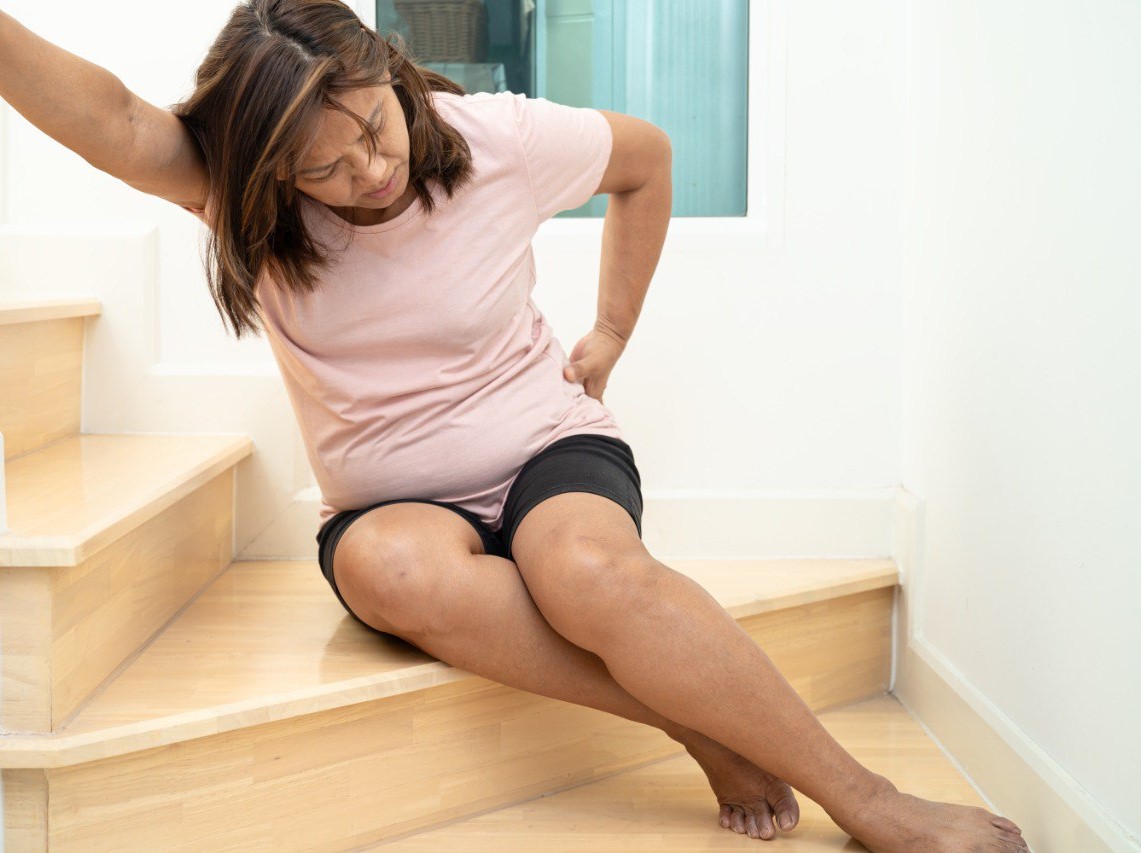Schedule An Appointment With Us
Are Your Symptoms Affecting Your Quality Of Life?
Consult our MOH-accredited orthopaedic specialist for an accurate diagnosis & personalised treatment plan today.

MBBS (S’PORE)
MRCS (Ireland)
MMed (Ortho)
FRCSEd (Ortho)

Hip and pelvic fractures refer to breaks or cracks in the bones of the hip or pelvic area.
The hip is a ball-and-socket joint where the head of the femur (thigh bone) fits into the acetabulum, a part of the pelvic bone. The pelvis, located at the base of the spine, is a structure of bones comprising the ilium, ischium, and pubis. Fractures in these areas can range from minor cracks to complete breaks, affecting one or multiple parts of the hip and pelvic bones.
Hip and pelvic fractures can be attributed to a variety of factors, which are generally categorised into traumatic causes, medical conditions, and other contributing factors.
Hip and pelvic fractures can be classified into various types, each with unique characteristics and implications for treatment and recovery.
The symptoms of hip and pelvic fractures can vary depending on the type and severity of the fracture, but there are common signs to be aware of.
Schedule An Appointment With Us
Consult our MOH-accredited orthopaedic specialist for an accurate diagnosis & personalised treatment plan today.
Diagnosing hip and pelvic fractures involves a combination of clinical assessment and imaging studies.


Non-surgical treatment may be recommended for certain types of hip and pelvic fractures, particularly those that are less severe or stable.
Surgical intervention is often necessary for more severe hip and pelvic fractures, particularly those involving displacement or instability.
Involves the use of metal plates, screws, or rods to hold the fractured bones in place until they heal. Common for fractures that are not significantly displaced.
In cases where the hip joint is damaged, a partial or total hip replacement may be performed. This is more common in older adults with joint wear.
Used for certain pelvic fractures, where a frame outside the body is connected to the bone with pins to hold it in place during healing.
Involves inserting a metal rod into the marrow canal of the femur to stabilise subtrochanteric or femoral shaft fractures.
For unstable pelvic fractures, surgical reconstruction of the pelvic ring may be necessary to restore stability and alignment.

MBBS (S’pore)
MRCS (Ireland)
MMed (Ortho)
FRCSEd (Ortho)
Dr Kau (许医生) is a Fellowship trained Orthopaedic Surgeon with a subspecialty interest in Hip and Knee surgery and has been in practice for more than 15 years.
He is experienced in trauma and fracture management, sports injuries, and joint replacement surgery.
Preventing hip and pelvic fractures involves addressing risk factors and implementing strategies to strengthen bones and reduce the likelihood of falls. This is especially important for older adults and those with conditions that weaken bone strength.
For Singaporeans, Singapore Permanent Residents and Foreigners.
Please speak to our friendly clinic staff about using your insurance plans.

If you have any enquiry, please do get in touch. Leave us a message and we will get back to you shortly.
The healing time for hip or pelvic fractures can vary significantly based on several factors. Minor fractures can heal within several weeks, while more complex or severe fractures may take several months or longer.
Leaving a hip or pelvic fracture untreated can lead to severe and long-lasting complications. Chronic pain and discomfort are common, as the fracture may not heal properly, leading to misalignment and abnormal stress on adjacent muscles and joints. Untreated fractures can disrupt blood flow, increasing the risk of blood clots.
The ability to walk normally after a hip or pelvic fracture largely depends on the severity of the fracture, the effectiveness of the treatment, and the patient’s commitment to rehabilitation.
Many patients can regain normal walking abilities, especially with early and appropriate treatment followed by targeted physical therapy. However, the outcome can vary, and some individuals may experience residual stiffness, reduced range of motion, or a slight alteration in their gait.
Some individuals may experience ongoing discomfort or chronic pain in the hip or pelvic area. Reduced mobility and a decrease in the range of motion of the hip joint are also common, which can affect daily activities and independence. There is also an increased risk of arthritis in the affected joint in the years following the fracture.